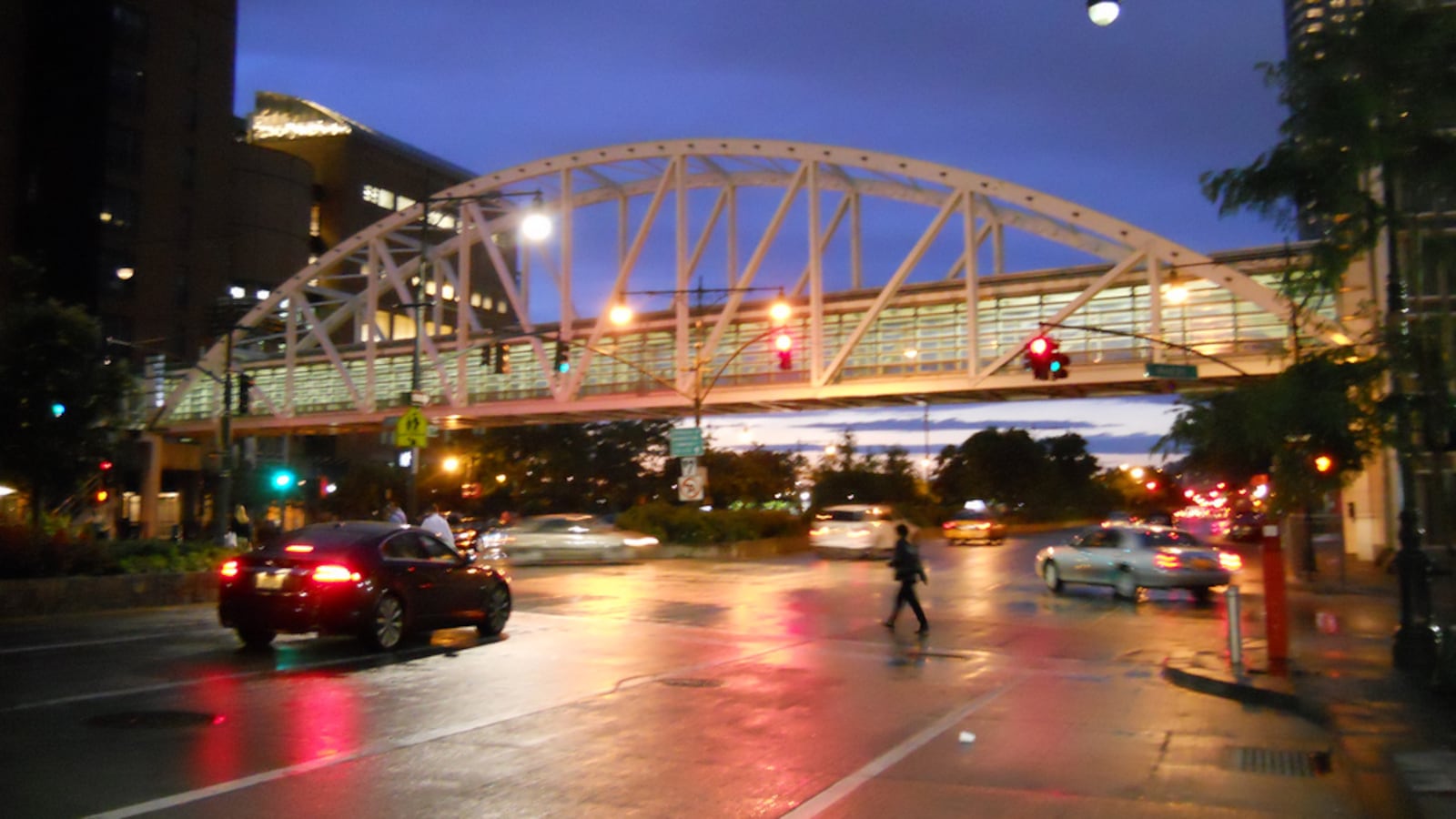As politicians and parents take sides in the heated debate over a new plan to scrap the specialized high school test, students at the center of the controversy are wrestling with the issues themselves.
Standing outside Stuyvesant this week, some argued that the students admitted under the new plan will be unprepared for the coursework. Others argued that time spent on test prep should be rewarded, not dismissed as contributing to inequity. Nearly all of the students, who benefitted from their success on the test, felt some emotional connection to the exam. And plenty of them also acknowledged the need for more diversity.
“I’m pretty conflicted about it,” said William Lohier, a junior at Stuyvesant and one of the few black students in his class.
“What no one is arguing with is that the system is broken, and that something needs to change. But there has been a lot of backlash, especially from Stuy students, over the plan de Blasio has proposed.”
Mayor Bill de Blasio’s proposal aims to change the makeup of specialized high schools in two ways — first by reserving 20 percent of the seats for students from low-income families starting next year and later, after a potential law change, eliminating the Specialized High School Admissions Test and offering spots to the top 7 percent of eighth-graders at every public middle school.
Now, Hispanic students make up close to 3 percent of the student body at Stuyvesant, while black students make up less than 1 percent. For junior Isabel Mendoza, who is black and Hispanic, de Blasio’s ultimate goal — to have more students who look like her at Stuyvesant and the other top New York public high schools — is one she can easily get behind.
“It’s very weird for there to be like eight students who are black in a [class] full of 800 kids,” said Mendoza. “I think it’s really good that they’re trying to encourage more kids to join and apply to these schools.”
Asian students currently make up 62 percent of the schools, and de Blasio’s proposal has sparked outrage in some Asian communities. On Tuesday, parents at a rally in front of City Hall described sacrificing time and money to ensure their children were prepared for the admissions test, a point Stuyvesant sophomore Kevin Lu echoed. All of that hard work means that his spot was earned, he says.
“People are in specialized programs because they studied and worked hard for it,” said Lu. “So why not just keep this program?”
He and others described watching friends study and not make the cut — experiences that they said underscored the need for even more opportunities for relatively high scorers.
“It’s already so competitive,” said Ahmed Sultan. “Limiting it even more by taking away certain spots and reserving them for people who don’t score above the cutoff for the SHSAT who have good grades in middle school isn’t the way to go about it.”
The most common sentiment: doubt that the plan would be successful, since students admitted through one of the new pathways would arrive unprepared.
“I don’t think that the SHSAT is necessarily the problem here, I think it’s just exposing these minorities to the resources they need to be able to get into these schools — I think that’s the root of the problem,” said Beverly Feng, a sophomore.
Lohier said other black students are also wary of de Blasio’s plan because of their sense that black and Hispanic students still lack significant support and access to test preparation.
“Why are we spending resources and energy advocating for something that so many people are so vehemently opposed to?” he asked. “Why aren’t we funneling money into buying test prep books for middle schools or spending time and going to middle schools so that people actually know about the test?”
The mayor and schools chancellor have argued that the city has spent years expanding access to test preparation, but the the demographics of specialized high schools have barely budged.
Lohier, for one, is not convinced that those now arguing for the improvement of elementary and middle schools serving black and Hispanic communities are sincere.
“As a black student, I don’t think that people really care about how middle schools and Black and Latinx communities do,” said Lohier. “Now suddenly, when it’s going to affect them, people are suddenly outraged?”

